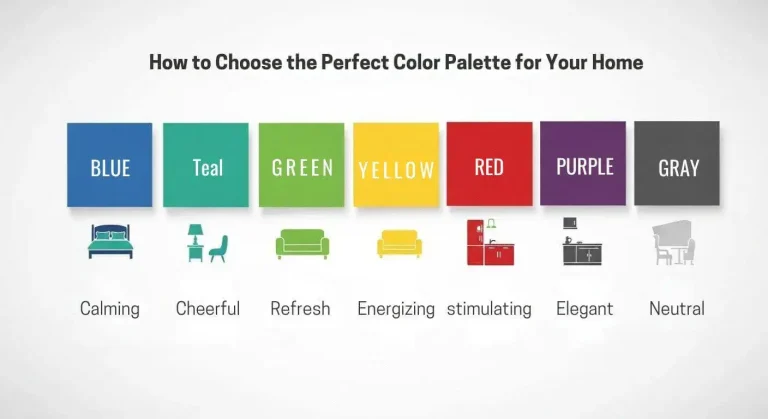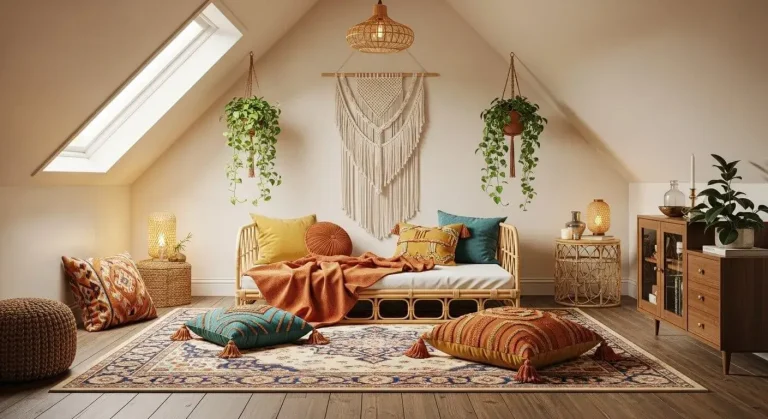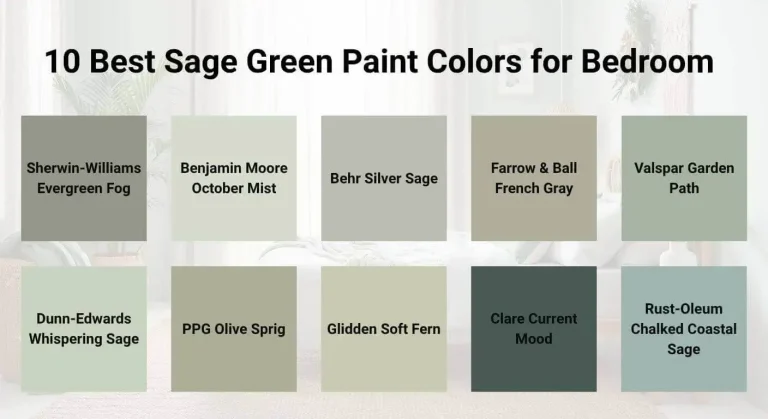How to Choose the Perfect Lighting for Every Mood and Function — Like a Pro
Ever walked into a room and immediately felt relaxed—or on edge—and had no idea why? Odds are, the lighting had something to do with it.
Knowing how to choose the perfect lighting for every mood and function can turn a dull space into something truly magical. And no, you don’t need to be an interior designer to get it right!
In this fun (but super practical) guide, I’ll walk you through the what, why, and how of lighting for your home—from cozy bedroom nooks to action-packed kitchens. Let’s light it up!
Understanding the Role of Lighting in Mood and Function
Let’s start by clearing up a common myth: lighting isn’t just about being able to see. It’s about how you feel in a space.
Lighting is your home’s silent mood-setter. Think of it as your house’s emotional DJ. Whether you’re prepping a five-course meal or winding down with a good book, the perfect lighting can make all the difference.
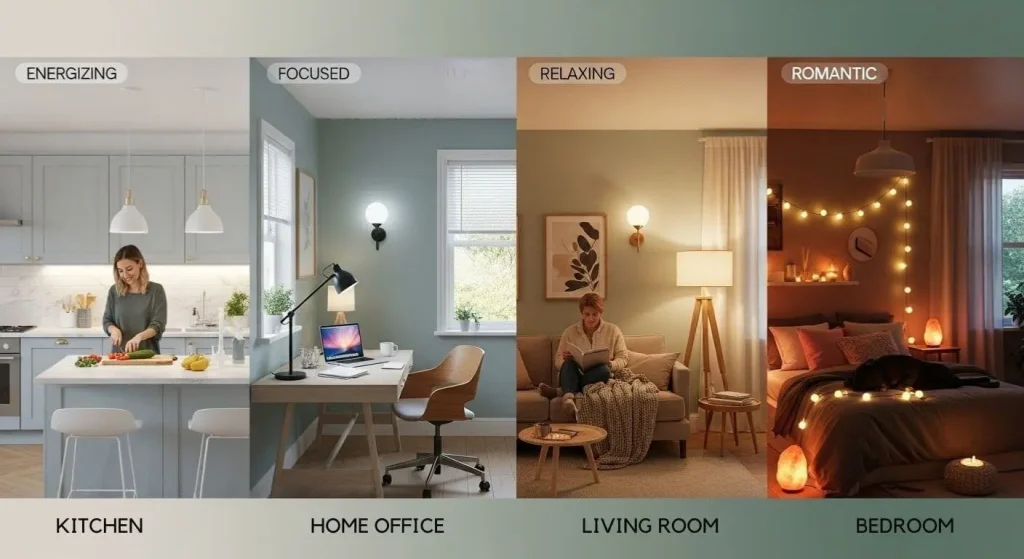
Here’s what lighting affects:
- Energy levels: Bright white lights can energize, while warm lights can relax.
- Focus: Task lighting boosts productivity. Ever tried chopping veggies in dim light? Not ideal.
- Ambiance: Want romantic? Soft lighting is your friend.
- Room perception: Smart lighting makes small spaces feel bigger and ceilings higher.
👉 For instance, our Create a Powerful Calming Bedroom Atmosphere guide shows how the right hues and lights can transform your bedroom into a stress-free zone.
Types of Lighting You Need to Know About
Let’s break it down. Most effective lighting setups layer three types of light. Think of them as the lighting trifecta:
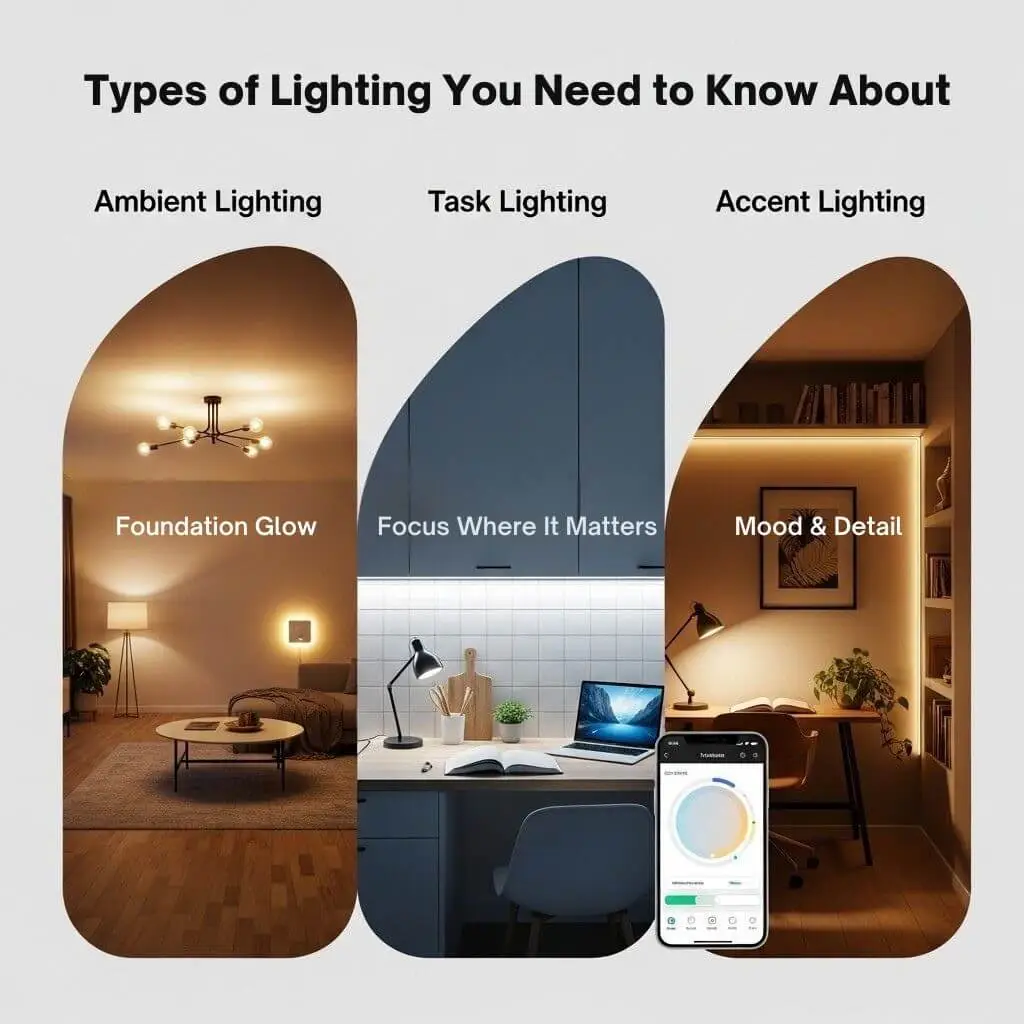
1. Ambient Lighting (Your Room’s Foundation Light)
This is your main source of light—usually overhead fixtures like ceiling lamps or chandeliers.
Use it to:
- Provide overall brightness
- Navigate safely
- Set the base tone of the room
Pro tip: Use dimmers with ambient lighting. They give you control over intensity and help shift moods easily.
Amazon Pick: Kasa Smart Dimmer Switch HS220 – A smart way to dim lights without leaving the couch.
2. Task Lighting (Focused Light for Focused Work)
As the name suggests, it’s for activities: reading, cooking, makeup, or working.
You’ll find task lights in:
- Kitchens (under-cabinet LED strips)
- Home offices (desk lamps)
- Bathrooms (vanity lights)
Hot Tip: In a kitchen or workspace, cool white light works best. It mimics daylight and keeps you alert.
3. Accent Lighting (Mood & Style Enhancer)
This is your space’s jewelry. Accent lighting adds drama, highlights features, and enhances aesthetics.
Use it to:
- Highlight artwork or shelves
- Create shadows and depth
- Boost overall ambiance
Think LED strip lights, spotlights, or picture lights.
Amazon Pick: Philips Hue White & Color Ambiance Lightstrip – Add instant wow-factor with customizable color.
How to Match Lighting to Different Moods and Functions
Getting the right lighting isn’t just a design choice—it’s a lifestyle upgrade. To truly nail it, you need to consider what you do in each space and how you want to feel while doing it. Whether you’re cooking, relaxing, sleeping, or hustling through deadlines, your lighting should support your vibe and enhance functionality.
Each room plays a different role, so the lighting should, too. Let’s explore how to tailor lighting setups to serve both mood and purpose.
Kitchen Lighting: Where Brightness Meets Precision
The kitchen is a multitasking beast. From chopping veggies to midnight snack raids, this space needs lighting that’s functional, flexible, and even flattering. Plus, who doesn’t want their culinary creations to look Insta-worthy?

Recommended lighting layers for kitchens:
1. Ambient Lighting
- This is your foundation. Think recessed ceiling lights or flush mounts.
- Choose bright, cool white bulbs (4000K–5000K) to simulate natural daylight, which improves visibility for cooking and cleaning.
- For larger kitchens, consider adding track lighting or grid ceiling lights for even light distribution.
2. Task Lighting
- Key for food prep. Use under-cabinet LED strip lights or puck lights.
- Focus them over countertops, sinks, and stoves.
- Look for CRI (Color Rendering Index) of 90+ to reflect food colors accurately.
Amazon Favorite: Litever Under Cabinet LED Light Kit – Excellent brightness and a kitchen game-changer.
3. Accent Lighting
- Want to add a little flair? Install pendant lights above your island.
- Go for clear or frosted glass for a warm yet modern touch.
- Dimmable features let you switch from task mode to dinner-party mode.
Design Tip: Match lighting fixtures with cabinet hardware for a cohesive look. And if you’ve embraced calming tones like sage or pastel pink in your kitchen, the light can highlight them beautifully—just like we explore in our Sage Green Farmhouse Bedroom Ideas.
Living Room Lighting: The Ultimate Mood Chameleon
Living rooms are like Swiss Army knives—they need to adapt quickly. One minute you’re deep in a Netflix binge, the next you’re hosting friends for wine and cheese.
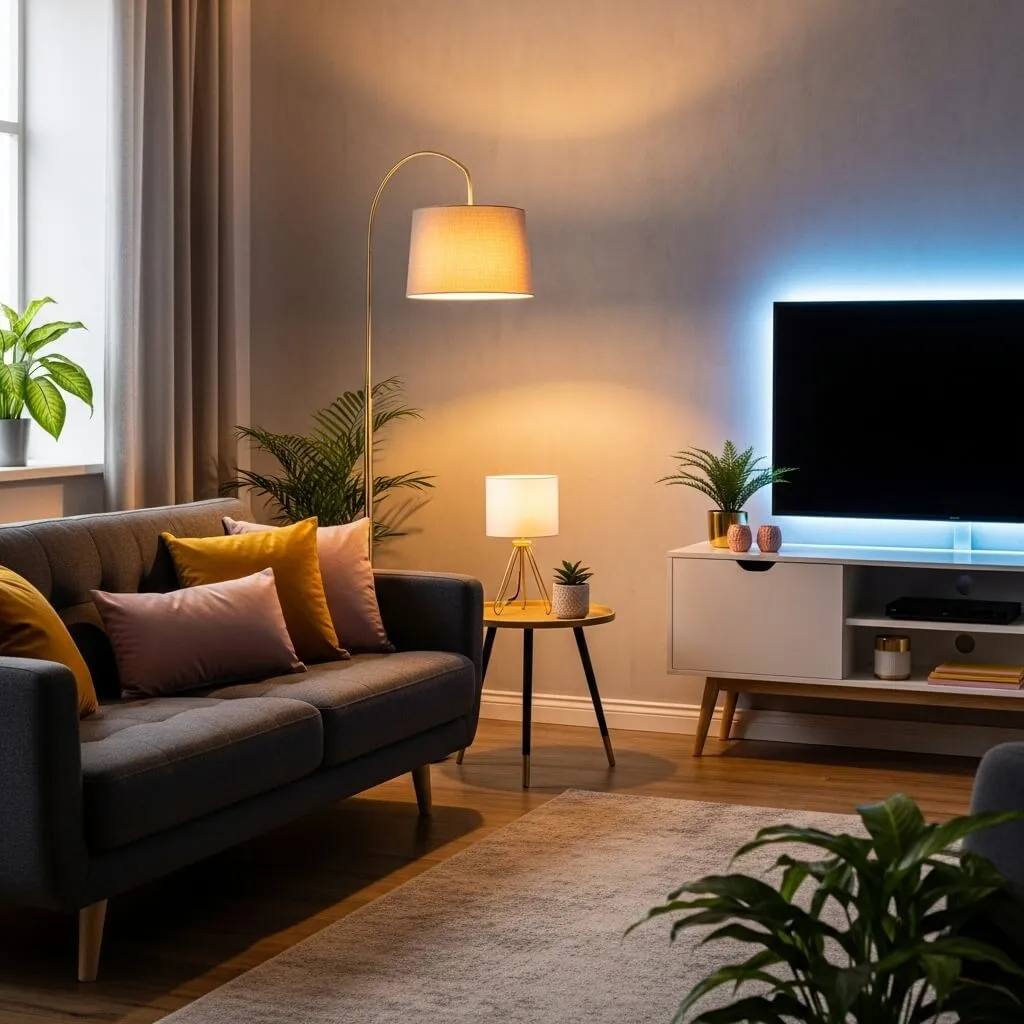
Here’s how to master this ever-changing zone:
1. Ambient Lighting
- Use a chandelier, ceiling fan with lights, or flush mount fixture.
- Pair with a dimmer switch so you can shift from daylight brightness to movie-night coziness.
- Opt for warm or soft white bulbs (2700K–3000K) for a relaxed feel.
2. Task Lighting
- Perfect for reading corners or game nights.
- Use adjustable floor lamps or table lamps near seating areas.
- Swing-arm lamps work great for compact spaces or to save on floor real estate.
3. Accent Lighting
- Add character with LED strips behind your TV, uplighting behind plants, or spotlights on artwork.
- This layer creates depth and warmth—ideal for layering moods throughout the day.
Amazon Pick: Globe Electric Architect Floor Lamp – Adds elegance and function in one sleek design.
Pro Insight: Love bold color combos like black and pink? Our Hot Pink and Black Bedroom Ideas show how lighting can amplify color themes—bring that same energy to your living space.
Bedroom Lighting: Soothing, Intimate & Customizable
If there’s one room where lighting matters for mood, it’s the bedroom. Whether you’re winding down, getting cozy, or just trying to find your slippers at 2 a.m., your lighting needs to cooperate.
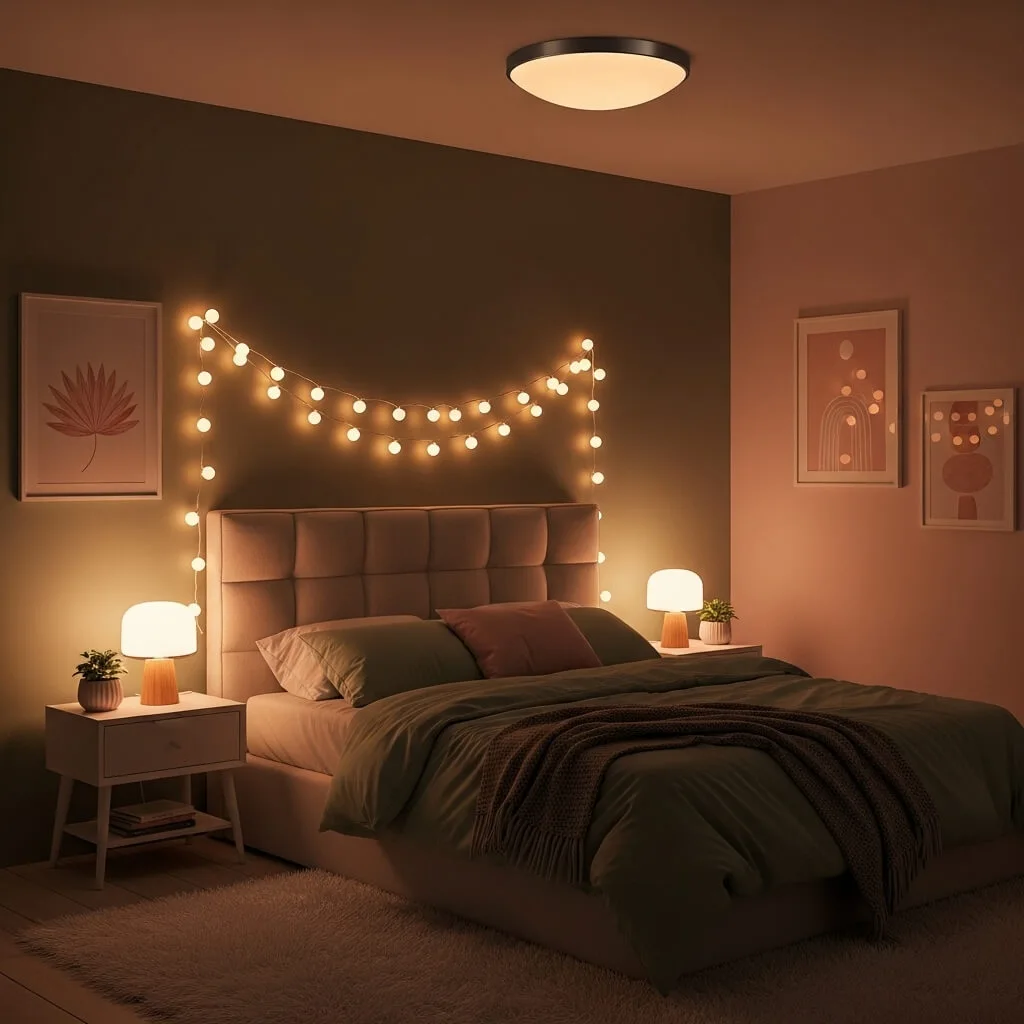
1. Ambient Lighting
- Stick with warm white (2700K) for a calming effect.
- Choose flush-mount ceiling lights or semi-flush chandeliers that create even illumination without being overpowering.
2. Task Lighting
- Ideal for nightstands, dressing tables, or reading nooks.
- Table lamps or wall-mounted sconces are stylish and practical.
- Go for dimmable lamps or smart bulbs so you can fine-tune brightness.
Amazon Suggestion: Philips Hue White Ambiance Smart Bulbs – Personalize lighting by time of day or mood.
3. Accent Lighting
- Use string lights, LED backlighting for headboards, or floor uplights to add charm.
- These soft glows make your room feel intimate and restful.
Design Idea: Want to create a dreamy or whimsical bedroom? Explore lighting in our Purple Bedroom Ideas and see how light can make or break your desired aesthetic.
Bathroom Lighting: Functional, Flattering & Stylish
Yes, it’s mostly utility—but bathroom lighting should still flatter your face and feel fresh.
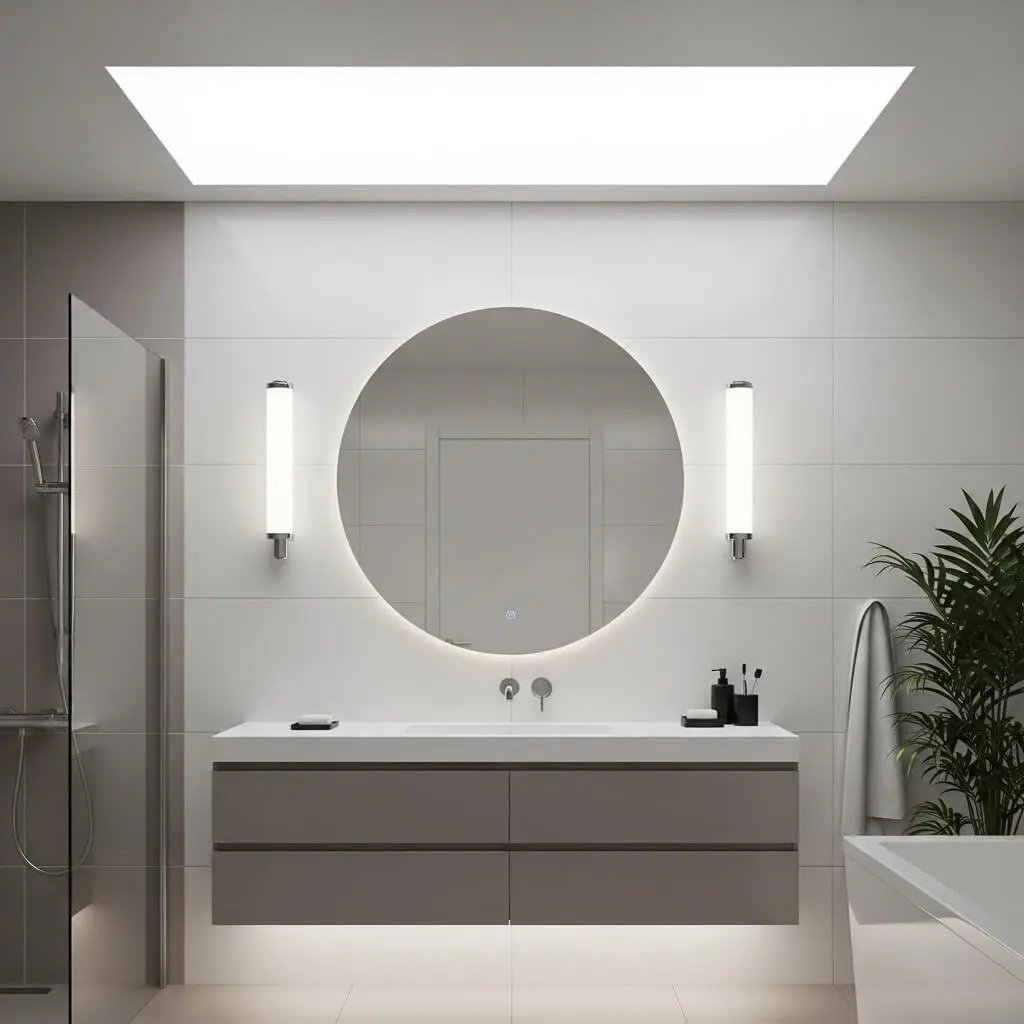
Here’s how to strike that balance:
1. Ambient Lighting
- Start with ceiling-mounted fixtures or recessed lights to cover the whole space.
- Avoid overly cool temperatures (over 5000K); they can feel clinical.
- Stick with neutral to warm white for a spa-like ambiance.
2. Task Lighting
- Crucial for shaving, skincare, and makeup.
- Use vertical light bars or sconces on either side of the mirror to avoid harsh shadows.
- Overhead mirror lights are common but can cast unflattering down shadows.
Amazon Recommendation: Globe Electric Parker Vanity Light – Blends style with excellent visibility.
3. Accent Lighting
- Try LED strip lights under the vanity or color-changing shower lights for a luxe touch.
- These details elevate your bathroom from boring to boutique-hotel-worthy.
Quick Fix: Motion-sensor night lights are perfect for those late-night bathroom visits—your toes will thank you.
Home Office Lighting: Focused, Bright & Non-Distracting
Your productivity zone deserves more than a flickering ceiling light. Lighting here should fuel focus, reduce eye strain, and sync with your circadian rhythm.
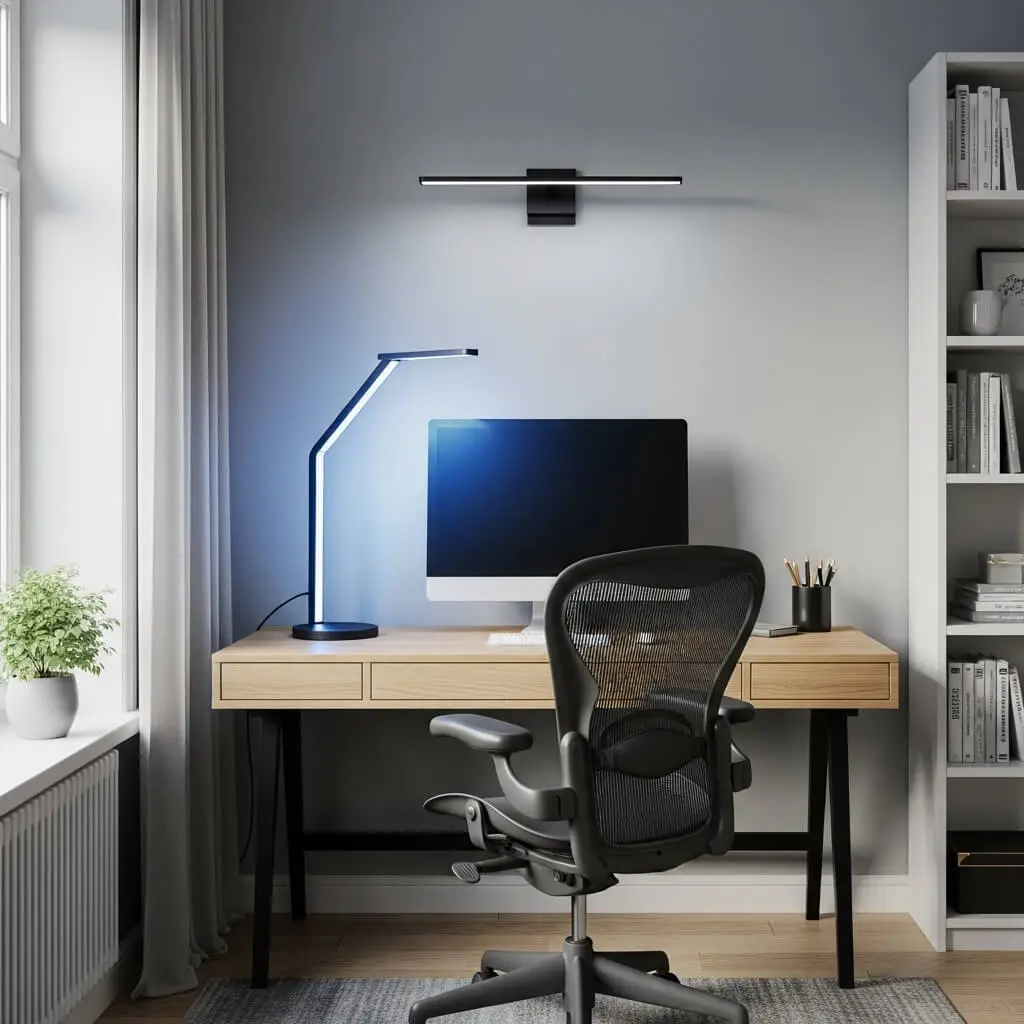
1. Ambient Lighting
- Use overhead flush or recessed fixtures to keep general brightness balanced.
- Choose cool white or daylight bulbs (4000K–5000K) to stay alert and focused.
2. Task Lighting
- Your best friend here is a desk lamp with brightness and color temp control.
- Avoid harsh spotlights; look for diffused light heads that reduce glare.
Amazon Must-Have: BenQ e-Reading Desk Lamp – Designed specifically for long hours at the desk.
3. Accent Lighting
- Use LED wall strips, inspirational quote lightboxes, or uplighting for plants to make your space feel personal, not sterile.
- Accent lighting can help break visual monotony and boost creativity.
Design Tip: If you’re into biophilic or calming aesthetics, try tying in natural materials and colors like sage, blue, or even pink-green blends—just like in our Pink and Green Bedroom Ideas.
Quick Tips to Choose the perfect Lighting for Every Mood and Function
Not all bulbs are created equal. Here are lighting basics to keep in your back pocket:
- Warm White (2700K–3000K): Relaxing and cozy (ideal for bedrooms & living rooms)
- Cool White (3500K–4100K): Energizing (best for kitchens, bathrooms, offices)
- Daylight (5000K+): Crisp and bright (great for reading, makeup, or garages)
Bulb Types:
- LEDs: Energy-efficient and long-lasting
- Halogen: Brighter but use more power
- Smart Bulbs: Control brightness and color with your phone or voice

Common Mistakes to Avoid in Home Lighting
Even seasoned decorators mess this up. Avoid these blunders:
- One light source per room: That’s a fast track to “blah.”
- Wrong bulb color temperature: Mood killer.
- Skipping dimmers: Seriously, these are game changers.
- Ignoring natural light: Don’t fight the sun—work with it.
Lighting + Color = The Ultimate Mood Makers in Home Design
Let’s be honest—when it comes to setting the mood of a room, it’s not just about what kind of bulb you screw in. It’s about how lighting and color work together like peanut butter and jelly (or avocado and toast, if that’s more your vibe). Individually they’re strong, but when paired well? Mood magic happens.
This is where your home transforms from just “looking good” to actually feeling good.
Why Lighting and Color Are Inseparable
Color affects how we feel. Lighting affects how we see that color.
Think about this: A soft pink wall under a cold, bluish LED might look washed out or even a little sad. But throw in some warm white lighting? Suddenly it feels dreamy, romantic, and cozy.
Lighting either amplifies or dulls the emotions a color can evoke. That’s why designers—and smart homeowners—always consider how light interacts with color.
Here’s a simple breakdown:
| Color | Mood | Best Lighting Match |
|---|---|---|
| Soft pastels (sage, blush, sky blue) | Calming, fresh, gentle | Warm white (2700K–3000K) |
| Dark shades (navy, charcoal, forest green) | Cozy, moody, dramatic | Warm or neutral white with accent lighting |
| Bright colors (yellow, coral, turquoise) | Energetic, cheerful, fun | Neutral white (3500K–4100K) to keep colors vibrant |
| Neutrals (grey, beige, white) | Balanced, clean, modern | Customizable—adjust with smart bulbs for mood shifts |
Final Thoughts: Let Your Light Shine Perfect
Choosing the perfect lighting for every mood and function isn’t just about bulbs and switches. It’s about how you live in your space.
It’s like tailoring a suit: it should fit your lifestyle perfectly. Don’t overcomplicate it—start small, test the vibe, and layer with purpose.
Your home should light you up, not wear you down.
So go ahead—dim those lights, brighten that reading nook, and have fun with it.
After all, lighting is the unsung hero of great design… and now you’re the lighting whisperer your home’s been waiting for.

